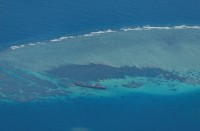https://youtu.be/lb_Zmuo-Jgw
(Eagle News) The Department of Health (DOH) on Saturday, Feb. 15, reported one confirmed polio case in Nueva Ecija which brings the total number of polio cases in the country to 17.
At the same time, the DOH also confirmed that environmental samples collected from Butuanon River in Cebu had tested positive for the poliovirus. This was after the confirmatory tests done by the Research Institute of Tropical Medicine.
The latest confirmed polio case is a one-year-old boy from Cabanatuan City, Nueva Ecija. The boy had fever and sudden onset weakness of the left lower limb. It was detected through surveillance of cases in the communities done and reported by barangay health workers.
“In response to this development, DOH is closely coordinating with the World Health Organization (WHO) for an appropriate vaccination response. DOH is assisting the Cities of Cabanatuan and Mandaue in strengthening their Acute Flaccid Paralysis surveillance capacities, including their identification and reporting mechanisms,” a DOH release said.
“It is important that we are able to timely detect any acute onset of paralysis in children – especially within our communities. We have evidence that the poliovirus continues to spread. Our aim is to promptly diagnose and treat all possible polio cases,” Health Secretary Francisco T. Duque III said.
DOH continues to implement the Sabayang Patak Kontra Polio (SPKP) campaign in the National Capital Region and all regions of Mindanao. The succeeding SPKP round will run from February 17 – March 1 in all regions of Mindanao and February 24 – March 8 in Metro Manila.
According to WHO, poliomyelitis (polio) is a highly infectious viral disease, which mainly affects young children. The virus is transmitted by person-to-person spread mainly through the faecal-oral route or, less frequently, by a common vehicle such as contaminated water or food, and multiplies in the intestine, from where it can invade the nervous system and can cause paralysis.
“Initial symptoms of polio include fever, fatigue, headache, vomiting, stiffness in the neck, and pain in the limbs. In a small proportion of cases, the disease causes paralysis, which is often permanent. There is no cure for polio, it can only be prevented by immunization,” a WHO primer on polio said.
There is no cure for polio, but it can be prevented by vaccination.
In the Philippines, after the scare brought about by the Dengvaxia vaccine, there has been a noticeable drop in those availing of free vaccines in health centers for preventable infections such as measles and polio.
In 2018, the DOH already pointed out how “vaccine hesitancy” among Filipinos after the Dengvaxia scare of 2017 had led to a measles outbreak in the country.
Vaccine hesitancy refers to delay in acceptance or refusal of vaccines despite availability of vaccination services.
In October 2018, WHO conducted a study in selected areas in Metro Manila to identify reasons for not bringing their children for immunization. The top reasons are the following: fear due to Dengvaxia, and the lack of time among households.
“I appeal to the public to rebuild your trust and confidence in vaccines that were long proven to be effective, and I am quite sure that all of us sometime in our lives have been recipients of these vaccines which had protected us from various diseases,” Health Secretary Francisco Duque III said in an earlier statement.








